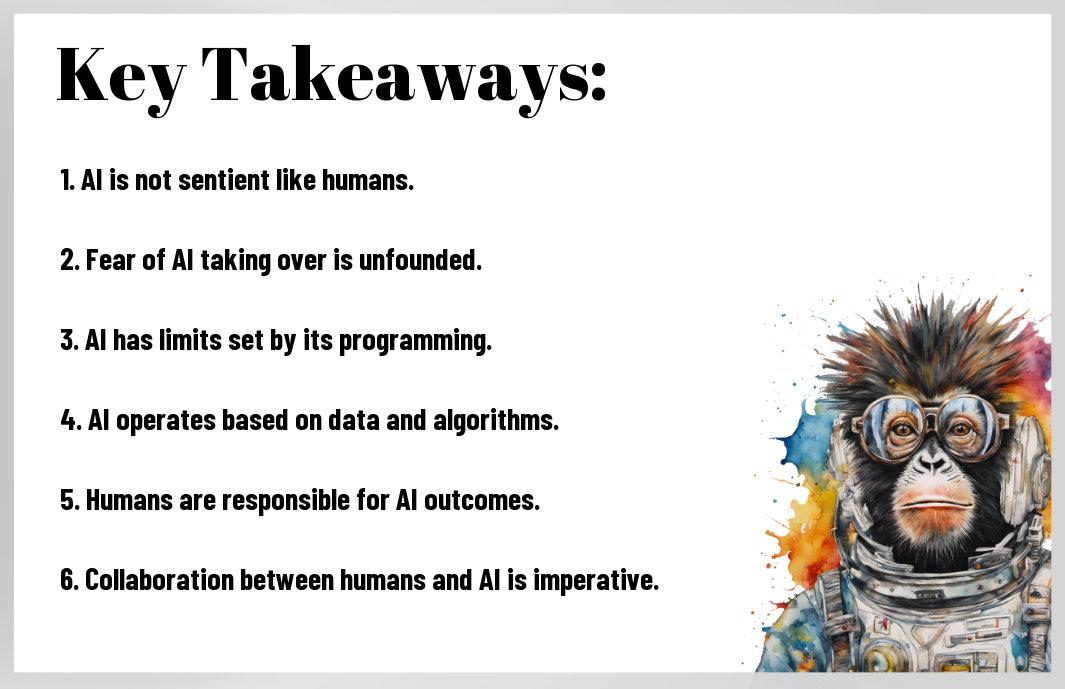Myths about artificial intelligence often lead to unfounded fears and misconceptions about this groundbreaking technology. In this informative blog post, we will explore into common myths surrounding AI and debunk them with facts and evidence. To further explore and dispel misconceptions about artificial intelligence, check out Debunking 10 Myths About Artificial Intelligence.
Separating Fact from Fiction
The Origins of AI Fears
Fiction: The fears surrounding artificial intelligence often stem from science fiction movies portraying AI as sentient beings with a desire to overthrow humanity. However, in reality, AI is a tool created by humans to assist with various tasks.
Common Misconceptions Debunked
On Common Misconceptions Debunked: One common misconception about AI is that it will lead to mass unemployment as machines replace human workers. In truth, AI is more likely to create new job opportunities and enhance productivity rather than completely replace human labor.
To debunk these myths, it’s imperative to understand that AI is only as capable as the data it is trained on and the algorithms it follows. While AI can perform complex tasks, it lacks human consciousness and emotions, making the fear of a robot uprising unfounded. By educating ourselves about the capabilities and limitations of AI, we can separate fact from fiction and embrace the potential benefits it offers to society.
The Reality of AI Capabilities
There’s a lot of hype and misinformation surrounding artificial intelligence, but it’s important to separate fact from fiction. For a comprehensive look at debunking common myths about AI, check out Debunking the Myths: 20 Misconceptions About Artificial Intelligence. Let’s examine into the actual capabilities of AI.
Current State of AI Development
The current state of AI development is rapidly advancing, with machine learning algorithms becoming more sophisticated and capable of handling complex tasks. AI is being used in various industries such as healthcare, finance, and transportation to streamline processes and make data-driven decisions.
Limitations and Challenges
Current limitations and challenges in AI revolve around ethical considerations, bias in algorithms, and the lack of understanding of how AI reaches decisions. These issues are being addressed through increased transparency, ethical guidelines, and improved training data to enhance AI capabilities.
For instance, ensuring that AI systems are fair and unbiased requires diverse datasets and continuous monitoring to prevent discriminatory outcomes. By overcoming these challenges, AI can reach its full potential as a transformative technology for society.
AI in Everyday Life
Once again, exploring Artificial Intelligence in our everyday lives is crucial for understanding its true potential. To explore deeper into this topic, check out Overcoming the Fear of AI: Debunking Common Myths.
Positive Impact on Industries
With AI revolutionizing various industries such as healthcare, finance, and transportation, the technology is enhancing efficiency, reducing costs, and enabling innovative solutions.
How AI is Already Helping Humans
An increasing number of businesses are leveraging AI for tasks like customer service, personalized recommendations, and predictive analytics, improving user experience and streamlining operations.
The applications of AI in everyday life are diverse and impactful, offering solutions to complex problems while transforming industries and enhancing human capabilities.
Addressing Ethical Concerns
Job Displacement and Economic Impact
To allay fears about AI leading to job losses, it’s necessary to understand that while automation may shift job roles, new opportunities and industries also emerge. Historically, technological advancements have created more jobs than they have replaced, leading to a net positive impact on employment.
Ensuring Transparency and Accountability
With the rise of AI in various sectors, ensuring transparency and accountability in its decision-making processes is crucial. Establishing clear guidelines and regulations can help mitigate the risks of bias and ensure that AI systems are held accountable for their actions.
Plus, implementing measures such as ethical AI frameworks and oversight committees can enhance trust in AI systems and promote responsible usage across industries.
Final Words
Ultimately, exploring the fears and debunking the myths surrounding artificial intelligence is necessary in fostering a clearer understanding of this transformative technology. By separating fact from fiction and embracing the possibilities that AI offers, we can pave the way for a future where innovation and ethics coexist harmoniously. Let’s continue to educate ourselves and engage in conversations that demystify AI, ensuring that we approach its advancements with knowledge and optimism.





